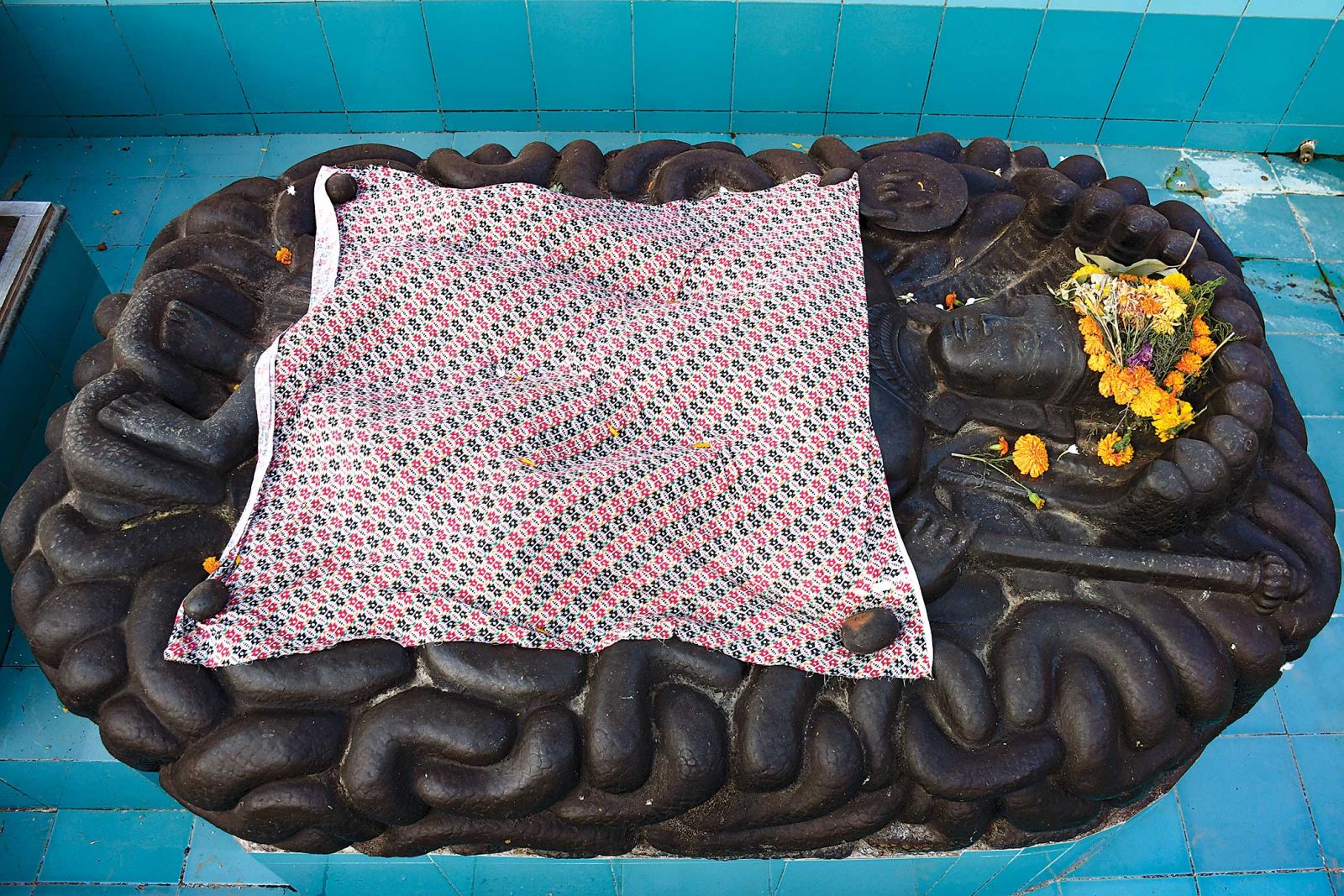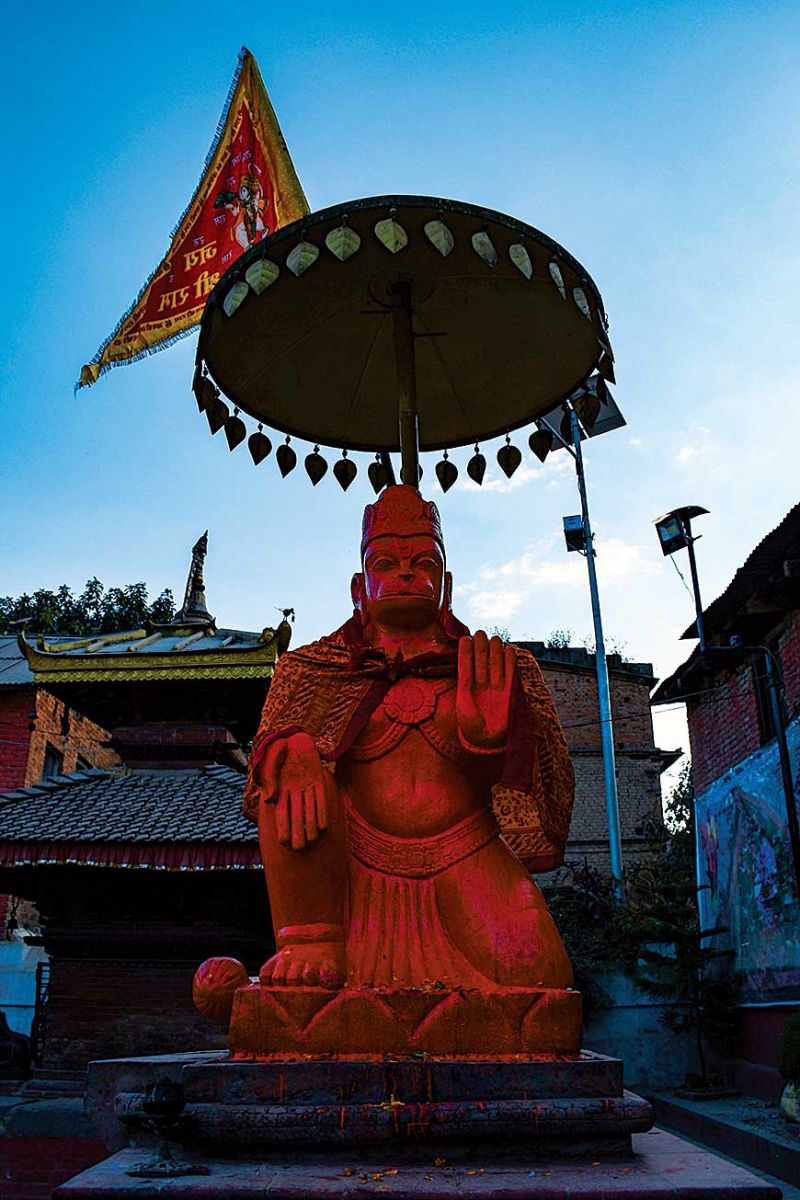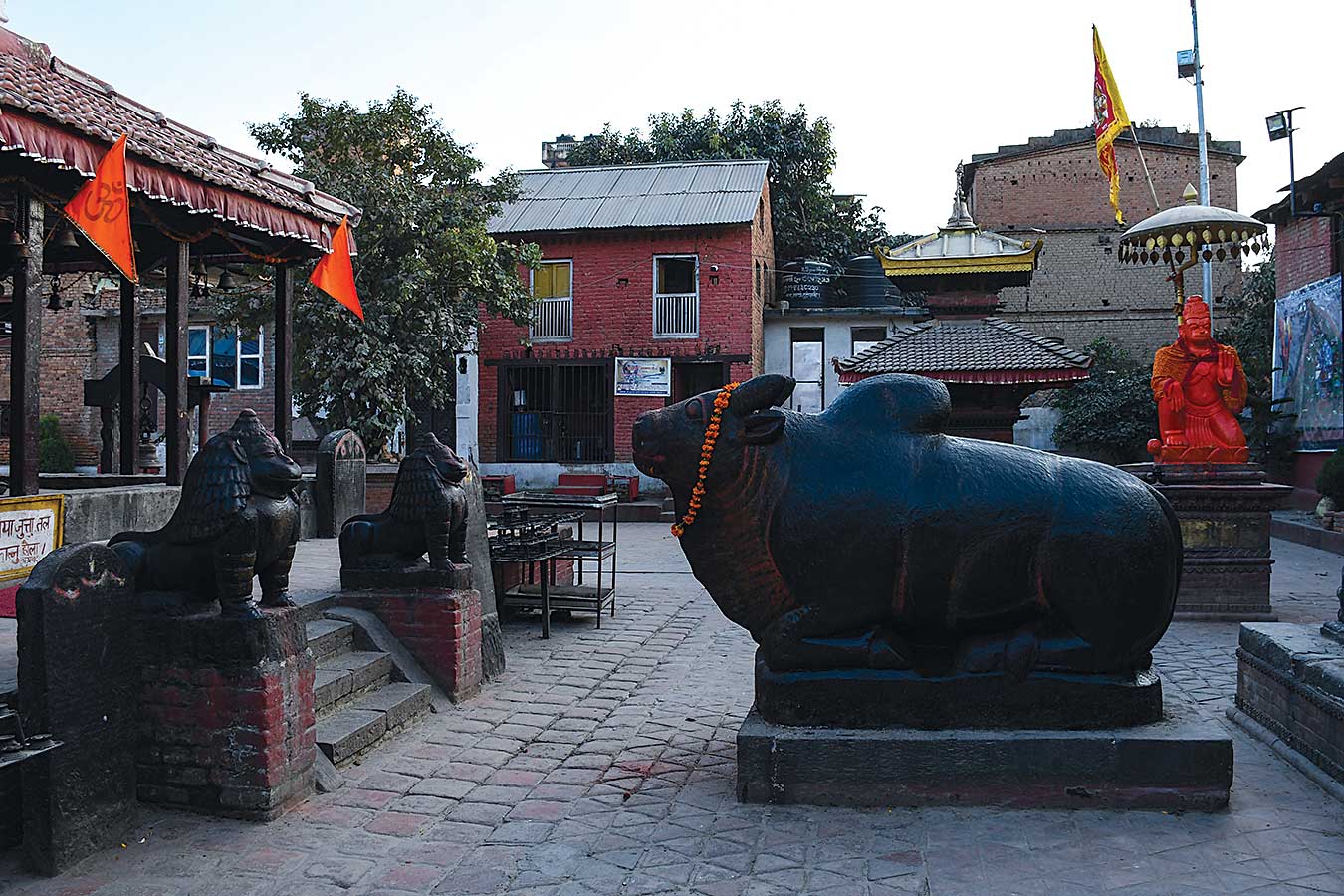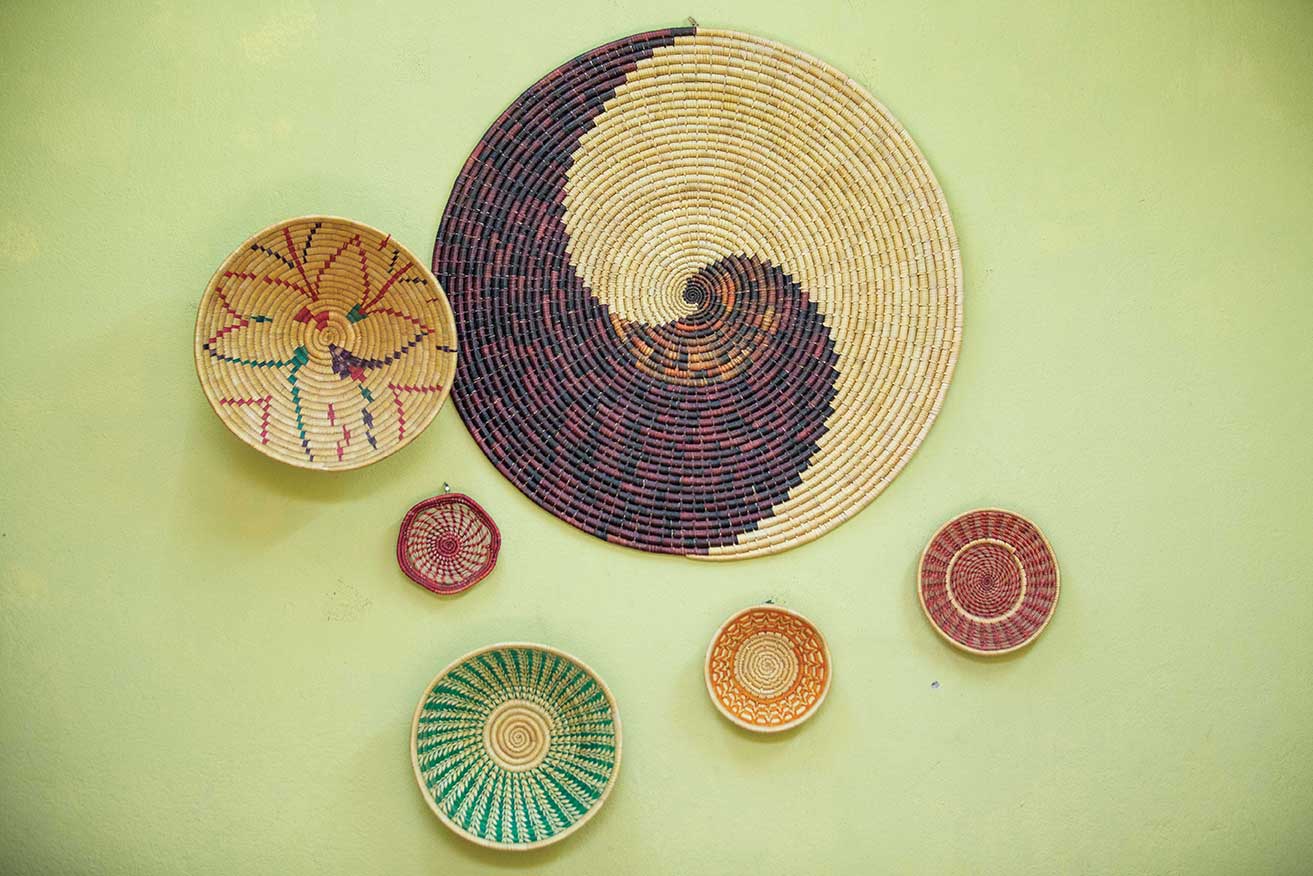 This is for all of you lazybones out there. There are quite a few interesting places in and around this magical valley that are far from the maddening crowd, yet close enough to be visited quite easily. In fact, come to think of it, maybe that’s why the UNESCO folks decided to name the entire valley as a world heritage site; I mean, there’s so much of unique art and architecture and ancient culture and heritage scattered all around this sprawling land that it will be impossible to name just a few as being of universal cultural value. And, that’s also why Kathmandu Valley is a place of exploration and discovery.
This is for all of you lazybones out there. There are quite a few interesting places in and around this magical valley that are far from the maddening crowd, yet close enough to be visited quite easily. In fact, come to think of it, maybe that’s why the UNESCO folks decided to name the entire valley as a world heritage site; I mean, there’s so much of unique art and architecture and ancient culture and heritage scattered all around this sprawling land that it will be impossible to name just a few as being of universal cultural value. And, that’s also why Kathmandu Valley is a place of exploration and discovery.
However, as mentioned before, the exploration is not as demanding on your limitations like in many similarly historically cultural-rich sites around the globe. It doesn’t take much of your precious time, nor of your tight budget. This time around, let’s go exploring around Lalitpur, and let’s say you are starting from Patan Durbar Square. And, let’s say you’ve rented a motorcycle (die-hard explorers, no doubt, would prefer mountain bikes, but then, that could be pretty challenging, considering the many ups and downs on the way); well, a motorcycle, then.
You drive first to Satdobato, passing Lagankhel, and continue straight on the road leading to Haatiban and Harisiddhi. A short distance from Satdobato Chowk, you take the road going right (opposite Salesberry Department Store); it goes past Khumaltar, where there’s the national agriculture center, and carries on past Sumeru Hospital and GEMS School. The road goes steeply up, and then you are in Dhapakel, wherein is situated the sprawling development known as Civil Homes Phase IV, a housing colony with hundreds of identical houses and a twelve-story building nesting some seventy-five apartments.
 Thenceforth, the road goes gently upwards, and although there is sporadic traffic (some buses and motorcycles), it is generally quiet all along the way. Soon, you’ll be passing a number of schools, including a Shemrock franchisee, some temples on the roadsides, and a rehab institution for addicts, as well as a spacious place with statues of two horses on the gate; it’s where you can rent out horses and horse carriages for weddings. There are about half a dozen white and brown horses stabled inside, along with an ornately decorated carriage, and a large banquet hall, where you can have your wedding reception.
Thenceforth, the road goes gently upwards, and although there is sporadic traffic (some buses and motorcycles), it is generally quiet all along the way. Soon, you’ll be passing a number of schools, including a Shemrock franchisee, some temples on the roadsides, and a rehab institution for addicts, as well as a spacious place with statues of two horses on the gate; it’s where you can rent out horses and horse carriages for weddings. There are about half a dozen white and brown horses stabled inside, along with an ornately decorated carriage, and a large banquet hall, where you can have your wedding reception.
Up ahead, a dirt road goes left, and you must take a detour on it, since it leads to a lovely lake known as Nagdaha—worth parking your bike and taking a stroll around it. Order some hanskochola and chiura (deeply-marinated and seared duck meat and beaten rice) at one of the lakeside restaurants and sit in the garden watching folks sailing around the lake in quaintly designed boats. Too bad you can’t have a beer or two, you know about the strict rules regarding drinking and driving, right? Anyway, chomping on the spicy choila will give you some succor, although duck meat has quite a number of delicate looking bones that aren’t delicate at all!
 Having had a jaw-full of this delicacy and an eyeful of the pretty scenery, boats, strollers, et al, including kids trying their luck with slim bamboo fishing rods, you drive back to the main road. Now, after ten minutes or so, you come to a crossroad, one road going left, the other going right. You take the latter and ride for some time through the town of Thecho, your ride becoming somewhat like a horse ride, because the road is pretty rough and bumpy in places. Soon enough, you see a sign reading, “Bhurungeshwari Mahadev Mandir, Sunakothi”. There’s a sattal (public logia) just opposite its small main gate, and some old houses around it, with lines of dried chili and garlic hanging from windows. It’s a sight straight out of medieval times.
Having had a jaw-full of this delicacy and an eyeful of the pretty scenery, boats, strollers, et al, including kids trying their luck with slim bamboo fishing rods, you drive back to the main road. Now, after ten minutes or so, you come to a crossroad, one road going left, the other going right. You take the latter and ride for some time through the town of Thecho, your ride becoming somewhat like a horse ride, because the road is pretty rough and bumpy in places. Soon enough, you see a sign reading, “Bhurungeshwari Mahadev Mandir, Sunakothi”. There’s a sattal (public logia) just opposite its small main gate, and some old houses around it, with lines of dried chili and garlic hanging from windows. It’s a sight straight out of medieval times.
Well now, Lord Mahadeva (a.k.a. Shiva) beckons, and you just cannot ignore this most powerful god’s command, can you? So you duck inside the gate and see an enormous statue of Nandi (Shiva’s vehicle, the bull) made of black granite (my guess). The temple in front is not very big, and although it looks like a pagoda-style temple, there’s a huge white dome on top. Could be a story behind this unusual architectural mix, but didn’t meet anybody who knew about it. All the same, the temple courtyard is neat and clean, and there’s a big statue of Hanuman, the monkey god, painted red from top to bottom, close to Nandi.
As for some background on the shrine, a large sign informs that this incarnation of Lord Shiva, as represented by the lingum (phallic symbol) of BhugareshworMahadeva inside the temple, is the first to have been worshipped by Lord Brahma of the Brahma sect of the Shiva bhakts (devotees). Yes, it seems a bit complicated, but what is not in as esoteric a subject as religion, whether of the East or the West?
 Besides the main gate, on both sides, are sattals, the one on the right looking pretty spic and span, with cushions all around, religious books on a shelf, and some musical instruments, including a harmonium and a tabalaset. A notice says that regular bhajans (devotional songs) are held on some days, and there’s a list of the participating devotees, most of which are Maharjans, the dominant community in the district. Another notice reads that local elders who have had their janku done (a ceremony to mark the occasion of a person reaching the seventy-seventh year, seventh month, and seventh day of his/her life) will be felicitated by the guthi (community association responsible for taking care of the temple).
Besides the main gate, on both sides, are sattals, the one on the right looking pretty spic and span, with cushions all around, religious books on a shelf, and some musical instruments, including a harmonium and a tabalaset. A notice says that regular bhajans (devotional songs) are held on some days, and there’s a list of the participating devotees, most of which are Maharjans, the dominant community in the district. Another notice reads that local elders who have had their janku done (a ceremony to mark the occasion of a person reaching the seventy-seventh year, seventh month, and seventh day of his/her life) will be felicitated by the guthi (community association responsible for taking care of the temple).
Seeing all this, along with the houses (mostly traditional) set around the shrine, it is easy to imagine what importance it holds in locals’ lives. Indeed, a fitting place to bring the community together through both prayer and social service.










